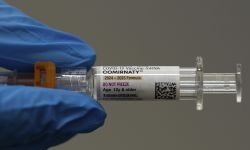Opinion | Reducing youth incarceration can help curtail spread of coronavirus

The Michigan Center for Youth Justice applauds Governor Whitmer for issuing Executive Order 2020-29, which, among other important directives, strongly encourages critical protections for an extremely vulnerable group of Michigan citizens: youth who are in custody.
On March 19, the Michigan Center for Youth Justice (MCYJ) called on the governor, Michigan Supreme Court, state legislators, local law enforcement, juvenile courts, and youth detention and residential facilities to stave off a public health emergency by immediately and dramatically reducing the number of children who are incarcerated. As highlighted in the official statement of the Youth Correctional Leaders for Justice, a national coalition,
Michigan confines hundreds of youth. Some are held in locally operated detention centers and two state- operated secure care facilities, with a majority placed in private residential facilities. All of these locations, like any other communal living setting, are inherently high-risk environments for a viral spread. In addition, research shows the vast majority of youth in juvenile facilities have experienced mental health issues, which are at risk of being exacerbated by the (necessary) restrictions that prevent family visits.
To reduce the spread of COVID-19 in youth facilities, we must continue to prioritize two goals that will improve physical, emotional and community safety: 1) send as many youths home as is feasible, and 2) provide additional support for the remaining youths and staff. Here’s how:
Keep young people from entering the juvenile justice system and halt new detentions. The vast majority of youth arrests are for minor disciplinary issues, such as curfew violations or nonviolent offenses. Law enforcement can decline to arrest young people with lower-level offenses and judges can halt their detainment. This aligns with the statement issued recently by the Michigan Supreme Court and the Michigan Sheriffs’ Association: “Law enforcement should only arrest people and take them to jail if they pose an immediate threat to people in the community. ... Judges should use probation and treatment programs as jail alternatives.” This aligns also with the new recommendations in the governor’s executive order.
Reduce the number of young people in confinement. Facilities can conduct immediate risk/need assessments to determine which youth can be safely returned home with appropriate support and supervision.
One innovative proposal, by Judge Frank Szymanski of Wayne County’s Third Circuit Court, is for each detention/residential facility to generate reports recommending which youth can be safely released and forward them to the judge, prosecutor, the youth's attorney and the supervising probation officer. If no one objects, the jurist could be authorized to issue orders for release without a hearing, with a provision for the continuation of community probation.
Governor Whitmer can only “strongly encourage” actions, not demand them, to safely reduce youth confinement, because the vast majority of youth in Michigan’s juvenile justice system are under the jurisdiction of county-based juvenile courts. The MCYJ and Wayne State Center for Behavioral Health and Justice (CBHJ) are therefore conducting surveys of local courts and detention centers in order to highlight best practices and encourage sound ideas for replication by other jurisdictions.
For youth who must remain confined, the Wayne State CBHJ has sent out a comprehensive document that includes strategies to maintain services in facilities, and connections to family and courts, by using technology (as well as how technology can support risk assessments, discharge planning and release hearings).
As a society, we have a shared responsibility to take care of our young people, especially during such a dangerous and unprecedented pandemic. The time to act is now. Kids who get in trouble are still kids.
See what new members are saying about why they donated to Bridge Michigan:
- “In order for this information to be accurate and unbiased it must be underwritten by its readers, not by special interests.” - Larry S.
- “Not many other media sources report on the topics Bridge does.” - Susan B.
- “Your journalism is outstanding and rare these days.” - Mark S.
If you want to ensure the future of nonpartisan, nonprofit Michigan journalism, please become a member today. You, too, will be asked why you donated and maybe we'll feature your quote next time!




